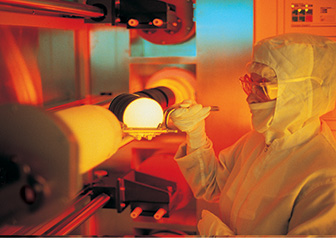Summary

| Quick Facts: Semiconductor Processors | |
|---|---|
|
$33,130 per year
$15.93 per hour |
|
| Associate’s degree | |
| None | |
| Moderate-term on-the-job training | |
| 21,100 | |
| -18% (Decline rapidly) | |
| -3,800 | |
What Semiconductor Processors Do
Semiconductor processors oversee the manufacturing of electronic semiconductors, which are commonly known as integrated circuits or microchips. These microchips are found in all electronic devices—including cell phones, cars, and laptops—and are an important part of modern life.
Work Environment
Microchips must be kept completely clean and free of impurities. To ensure this, semiconductor processors work in clean rooms that are kept free of contamination. They wear special garments, called “bunny suits,” over their clothes to prevent lint or other particles from contaminating the clean room.
How to Become a Semiconductor Processor
Many employers prefer that semiconductor processors have an associate’s degree, although sometimes completing a 1-year certificate program is enough.
Pay
The median annual wage of semiconductor processors was $33,130 in May 2010.
Job Outlook
Employment of semiconductor processors is projected to decline rapidly, by 18 percent from 2010 to 2020. Although there will be a strong demand for semiconductors in many products, automation at semiconductor factories, known as fabricating plants, is expected to grow, so fewer workers will be needed in this occupation.
Similar Occupations
Compare the job duties, education, job growth, and pay of semiconductor processors with similar occupations.
O*NET
O*NET provides comprehensive information on key characteristics of workers and occupations.
Contacts for More Information
Learn more about semiconductor processors by contacting these additional resources.










